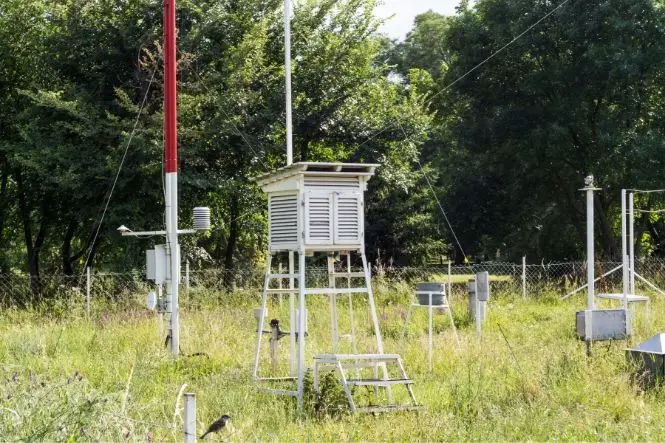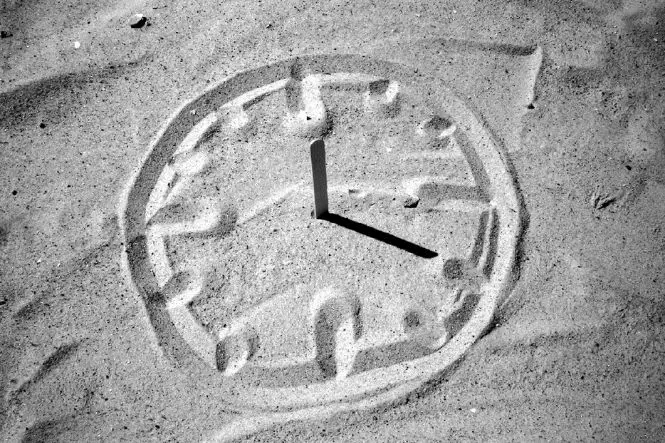Weather stations include different ways of measuring the weather. Meteorologists (people who study the weather) use weather stations to monitor the weather day by day, and use the results to make weather forecasts. Use a weather station to record the weather and see how it changes daily, weekly and monthly.
Table of Contents
Clouds
Keep a record of the different kinds of clouds each day (see ‘Watching Clouds’). What kind of weather is associated with different kinds of clouds?
Temperature
Use an outdoor thermometer to record maximum and minimum temperatures. Weather stations often have boxes called Stevenson screens to protect the thermometer from the sun and wind. Make a Stevenson screen by painting a plastic or wooden box white, putting it on its side, and sticking the thermometer on the back wall with double-sided tape where it will be protected. What is the weather like when the temperature is high or low?
Pressure
Use a barometer to measure the air pressure. What is the weather like when the air pressure is high or low?
Rainfall
Keep a record of the days that it rains, and what kind of rain it is – is it light, heavy, continuous or showery? Measure how much rain there is by making a rain gauge. This needs to be a clear container with a flat bottom and straight sides – a large jam with an open neck or an old straight-sided vase (ask permission first) is a good idea. Mark levels on the side using a permanent marker pen, and put the container out in the open. To make sure that it won’t be knocked or blown over, make a hole in the ground to keep it stable, or support it by making a ring of bricks or heavy stones.
If it snows, measure the depth of snow before it melts, and then see how much water is left when it melts. Is it the same amount?
Wind
Record the strength of the wind using the using the Beaufort scale (invented in 1805) see below to get an idea of how to do this:
- 0 = ‘calm’ – wind speed is 0 mph; smoke rises straight up in the air
- 1 = ‘light air’ – wind speed is 1-3 mph; smoke drifts
- 2 = ‘light breeze’ – wind speed is 4-7 mph; leaves rustle
- 3 = ‘gentle breeze’ – wind speed is 8-12 mph; twigs move constantly
- 4 = ‘moderate breeze’ – wind speed is 13-18 mph; small branches move and paper blows away
- 5 = ‘fresh breeze’ – wind speed is 19-24 mph; small trees sway
- 6 = ‘strong breeze’ – wind speed is 25-31 mph; large branches move
- 7 = ‘near gale’ – wind speed is 32-38 mph; large trees sway
- 8 = ‘gale’ – wind speed is 39-46 mph; twigs break off trees
- 9 = ‘severe gale’ – wind speed is 47-54 mph; slates blow off roofs
- 10 = ‘storm’ – wind speed is 55-63 mph; trees blow down
- 11 = ‘violent storm’ – wind speed is 64-72 mph; widespread damage
- 12 = ‘hurricane’ – wind speed is 73 mph; rare on land
Make a wind vane (see ‘When the Wind Blows: Making a Wind Vane’) and see what direction the wind blows. Does the wind direction make any difference to its strength, or to the weather?







